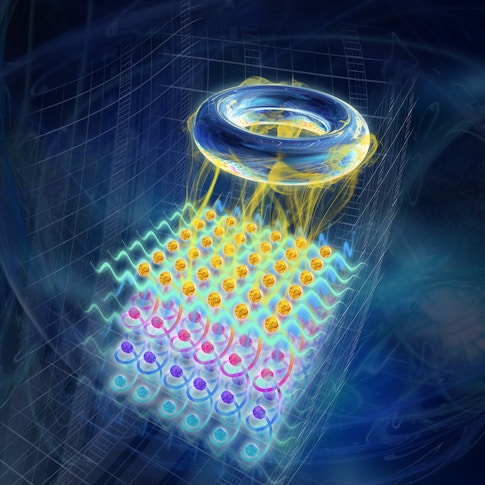Foundation Announces Simons Collaboration on Ultra-Quantum Matter
The Simons Foundation is pleased to announce the establishment of the Simons Collaboration on Ultra-Quantum Matter, directed by Ashvin Vishwanath of Harvard University.

Quantum mechanics is well established as the correct and successful theory of the dynamics of electrons, atoms and photons. Yet since its inception, its nonintuitive features — superposition, entanglement and measurement-induced collapse — have perplexed and fascinated physicists. Usually quantum phenomena are associated with atomic scales, but recent revolutionary developments demonstrate that in the right circumstances, these essential quantum aspects can extend to macroscopic matter. This is ultra-quantum matter (UQM), possessing robust nonlocal quantum entanglement, a key property and a resource. It allows for novel quantum effects impossible at the scale of individual atoms, like the distributed storage of information and electrical charges that are a fraction of the electron’s charge.
While the field of UQM originated from the study of dense matter at terrestrial temperatures, the theory that describes it unexpectedly emerges with the structure of gauge theory: the framework for describing elementary particles such as quarks in the vacuum at high energies. This link between gauge theory and UQM has already led to theoretical discoveries on both sides, from Chern-Simons terms to higher form gauge fields, fractons and dualities among apparently different quantum field theories. In the future, it might be possible to realize a novel quantum gauge theory in a tangible sample of UQM that can be held in one’s hand.

The goal of the Simons Collaboration on Ultra-Quantum Matter is to fully develop the theory of UQM from fundamental characterization and classification to the design for realization and testing of UQM in the lab. To achieve this, the collaboration will bring together experts in condensed matter physics, high energy physics, quantum information and atomic physics. The ramifications range from the discovery of new phases of matter to revolutionary quantum technologies to tabletop models for elementary particles and potentially even quantum gravity.


